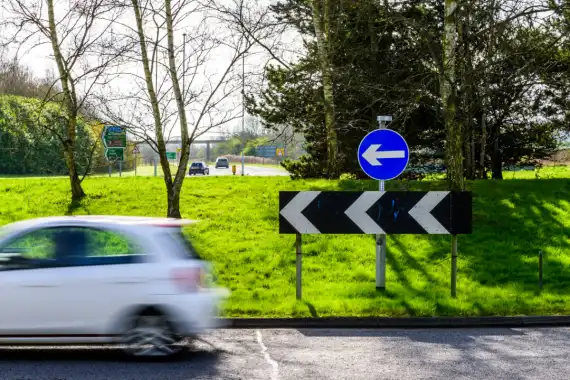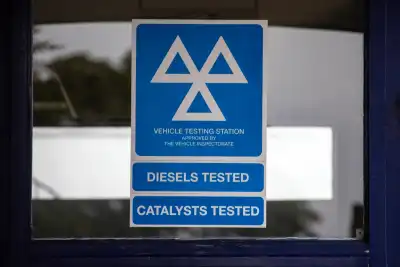
Obtaining a driver's license is a milestone that marks a significant step towards independence and freedom on the road. However, for many aspiring drivers, the driving test can be a nerve-wracking experience filled with anticipation and anxiety. Understanding the most common reasons why learners fail their driving tests is essential for any new driver seeking to navigate this crucial assessment successfully.
Regit delves into the top 10 reasons why learners often stumble during their driving tests, as compiled from DVSA official data. From seemingly obvious mistakes to the unexpected challenges faced on the test day, each of these factors can impact the outcome of the test.
By familiarizing yourself with these common pitfalls, you can equip yourself with the knowledge and skills necessary to ace your driving test and embark on a safe and rewarding driving journey.
1. Not making effective observations at junctions
This includes failing to judge the speed of an approaching vehicle, entering a roundabout with a vehicle approaching from the right, looking too late and making no effective observations at all.
To avoid making these mistakes, you must make effective observations before moving into a new road and make sure it is safe before proceeding.

2. Not using mirrors correctly when changing direction
People on their tests received faults for not using their mirrors when exiting a roundabout, causing a vehicle to slow when changing lanes on a duel carriageway and trying to change lane of a roundabout when a vehicle is directly alongside.
Ensure you use the 'mirror - signal - manoeuvre' routine effectively on your test to protect yourself against faults related to mirrors and changing direction. It is also important to check your mirrors carefully before signally, changing direction or changing speed.

3. Not having proper control of the steering
You must be able to steer the car as smoothly as possible and at the appropriate time. Common faults related to steering including not steering enough when going around a bend, repeatedly mounting the pavement when pulling up on the left and steering late when moving out to pass parked vehicles.

4. Incorrect positioning when turning right at junctions
You must be able to position the car as close to the centre of the road as is safe. Those who can't do this effectively receive faults for obstructing traffic when your wait to turn right and positioning in the left-hand land when turning right at a roundabout.

5. Not moving off safely
During your test, you must be able to move off safely while making the correct observations: from the side of the road, on a slope or hill (gradient) and from behind a parked vehicle, so you have to move off at an angle.
Common mistakes related to moving off safely include moving off from behind a parked vehicle into the path of an approaching vehicle or causing another vehicle to slow or stop. Not completing a blind spot check or any rear observations when moving off following an emergency stop also lead to faults on driving tests.

6. Not responding appropriately to traffic lights
Regular faults in relation to traffic lights include failing to stop at red lights, proceeding through a green light when the junction is not clear and stopping after the first white lines meant for cyclists.
It is essential you act correctly at traffic lights, checking that the road is clear before proceeding when the green light shows.

7. Poor positioning on the road during normal driving
To prove competency on your driving test you must be able to position the car correctly for your intended route, stay in the middle of marked lanes and only change lanes when necessary.
Common mistakes that lead to faults include repeatedly driving too close to the kerb or centre of the road, unnecessarily driving in the right hand lane of a dual carriageway and cutting across the normal road positions when you go ahead at roundabout with no lane markings.

8. Not responding correctly to traffic signs
Understanding and reacting to all traffic signs is an essential part of driving which needs to be proven on a test. Examiners regularly marks faults for ignoring 'stop' or 'no entry' signs, driving in bus lanes, choosing the wrong lane at a roundabout with clear signage and acting late or not at all to speed limit changes.

9. Not having control of the vehicle when moving off
Repeatedly stalling and allowing the vehicle to roll back after stalling are signs of not having control of the vehicle when moving off and can lead to faults on a test. Those who try to move off without selecting a gear are also at risk of receiving minors and risk failing their test.

10. Not keeping control of the vehicle during reverse parking
On a driving test, you must be able to control the car accurately when you parallel park at the side of the road or reverse to park in a parking bay.
Mistakes related to parking include wheels ending up on the pavement at the end of a parallel park or ending up outside of the parking bay. Too many attempts to reposition when parking can also lead to minors and faults on a test.

Making a mistake during your driving test that leads to failure can happen quite easily. Despite some of these errors being apparent, the pressure of the driving test can make even the most skilled learners prone to committing one of these ten mistakes.
To enhance your driving abilities and boost your confidence on the road, it's crucial to practice extensively before the test. This preparation will not only help you handle test day nerves better but also prevent you from making these typical errors.
You can get more advice and guidance from Regit's New Driver Hub.




